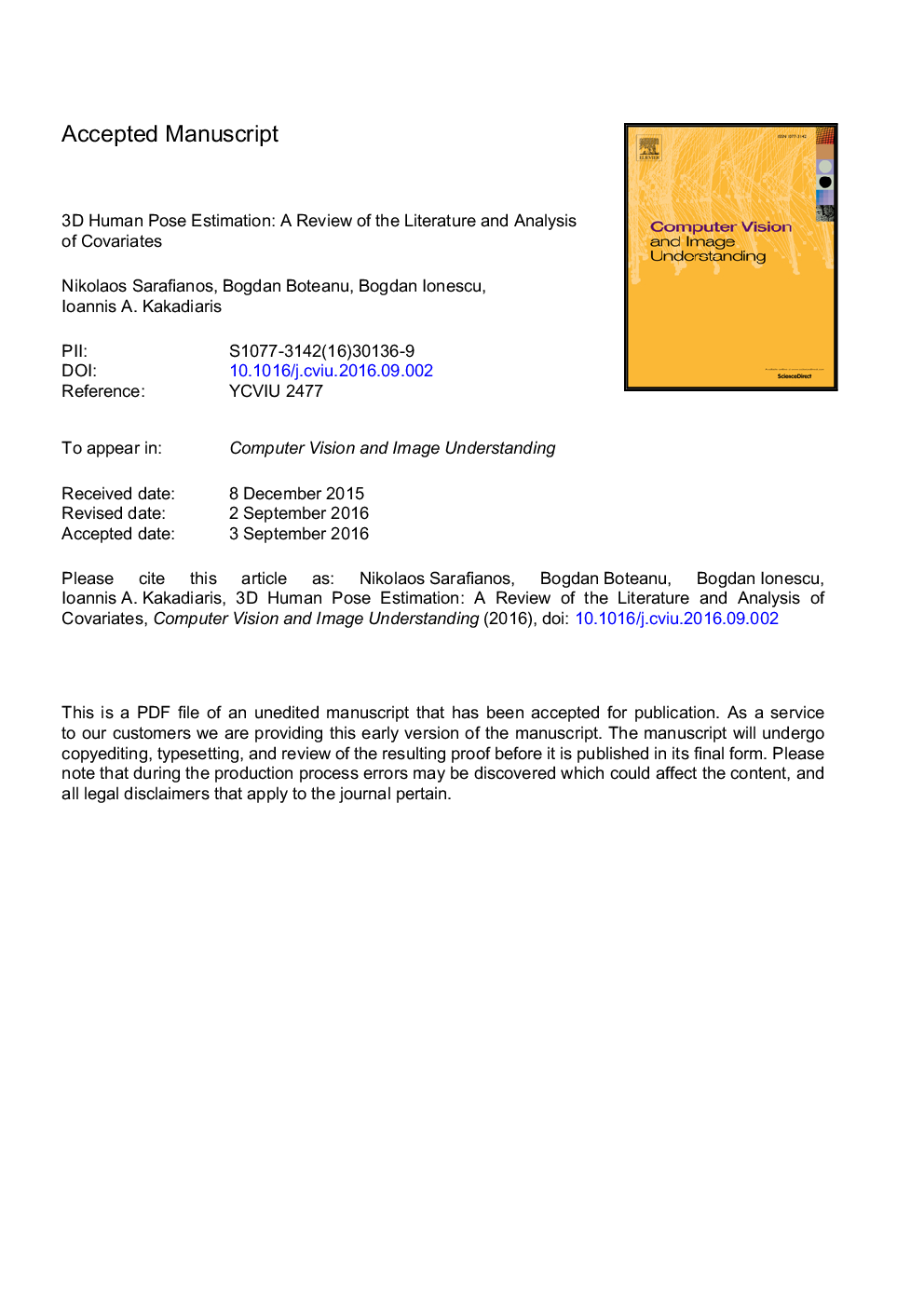| Article ID | Journal | Published Year | Pages | File Type |
|---|---|---|---|---|
| 4968740 | Computer Vision and Image Understanding | 2016 | 30 Pages |
Abstract
Estimating the pose of a human in 3D given an image or a video has recently received significant attention from the scientific community. The main reasons for this trend are the ever increasing new range of applications (e.g., human-robot interaction, gaming, sports performance analysis) which are driven by current technological advances. Although recent approaches have dealt with several challenges and have reported remarkable results, 3D pose estimation remains a largely unsolved problem because real-life applications impose several challenges which are not fully addressed by existing methods. For example, estimating the 3D pose of multiple people in an outdoor environment remains a largely unsolved problem. In this paper, we review the recent advances in 3D human pose estimation from RGB images or image sequences. We propose a taxonomy of the approaches based on the input (e.g., single image or video, monocular or multi-view) and in each case we categorize the methods according to their key characteristics. To provide an overview of the current capabilities, we conducted an extensive experimental evaluation of state-of-the-art approaches in a synthetic dataset created specifically for this task, which along with its ground truth is made publicly available for research purposes. Finally, we provide an in-depth discussion of the insights obtained from reviewing the literature and the results of our experiments. Future directions and challenges are identified.
Keywords
Related Topics
Physical Sciences and Engineering
Computer Science
Computer Vision and Pattern Recognition
Authors
Nikolaos Sarafianos, Bogdan Boteanu, Bogdan Ionescu, Ioannis A. Kakadiaris,
